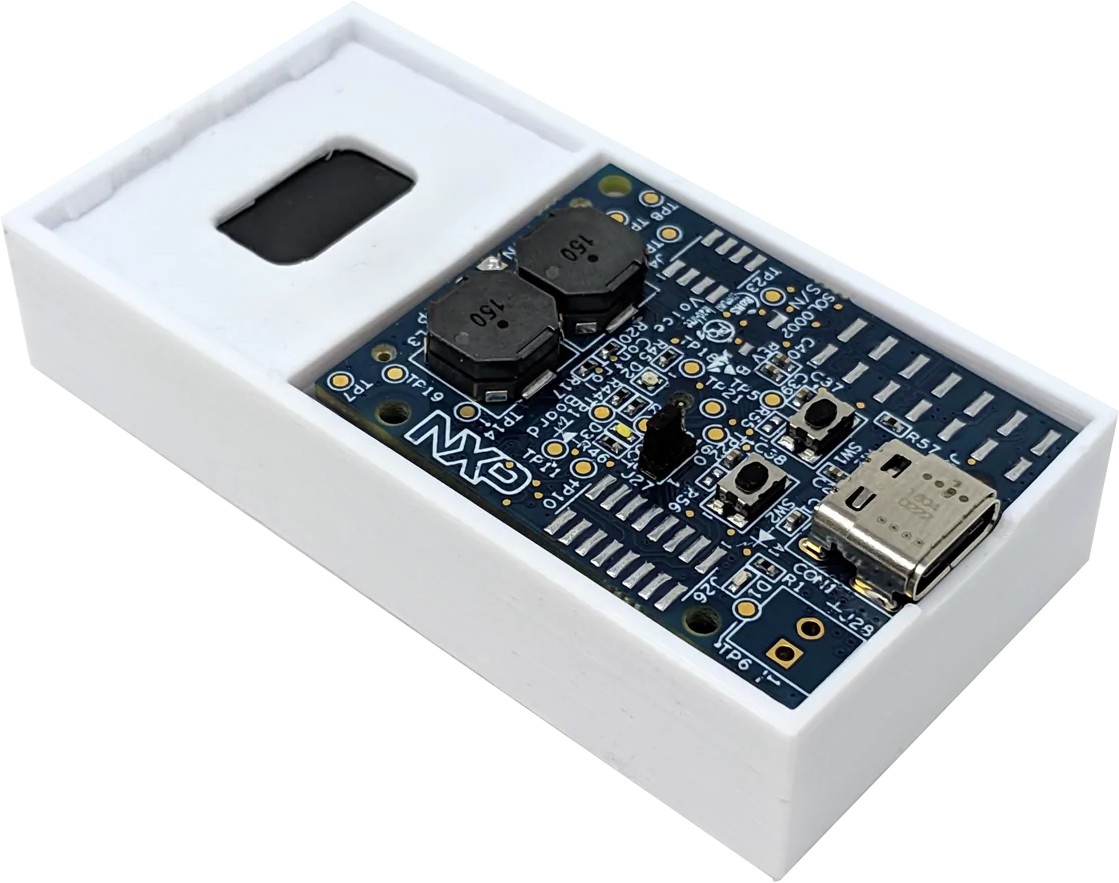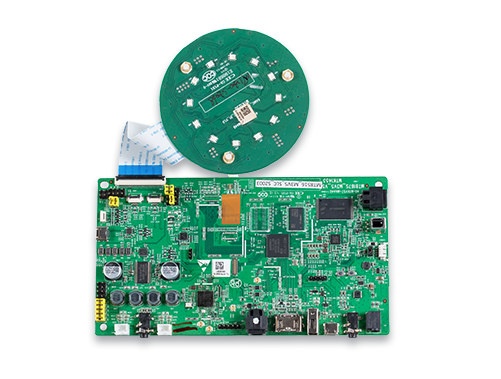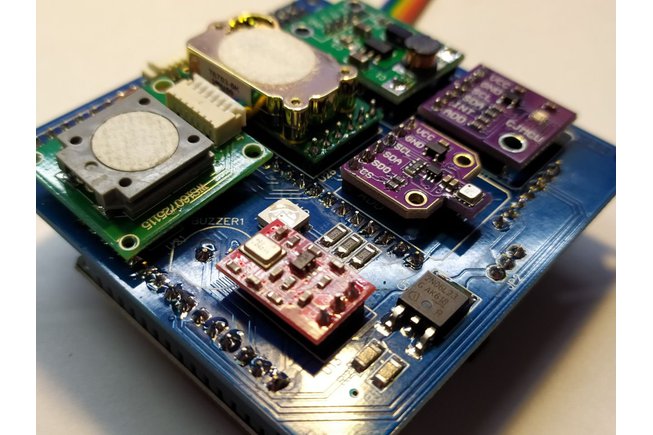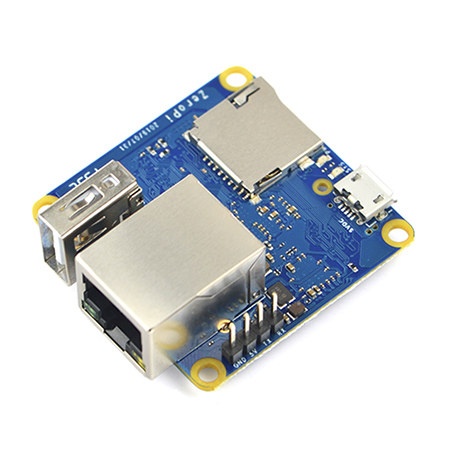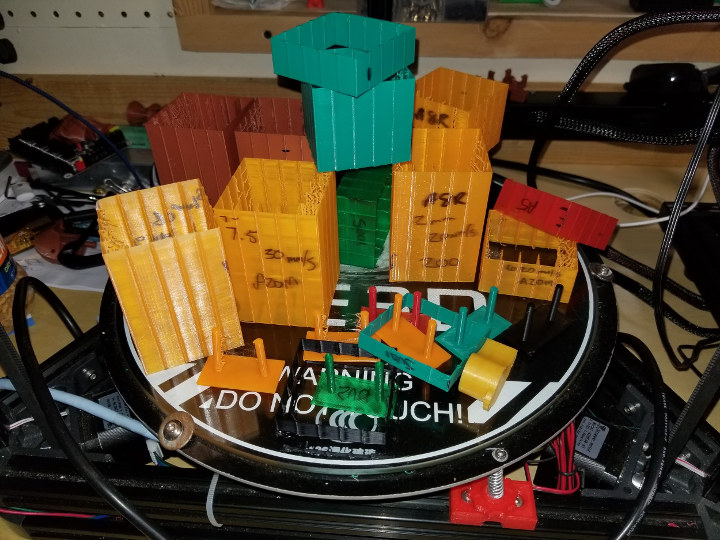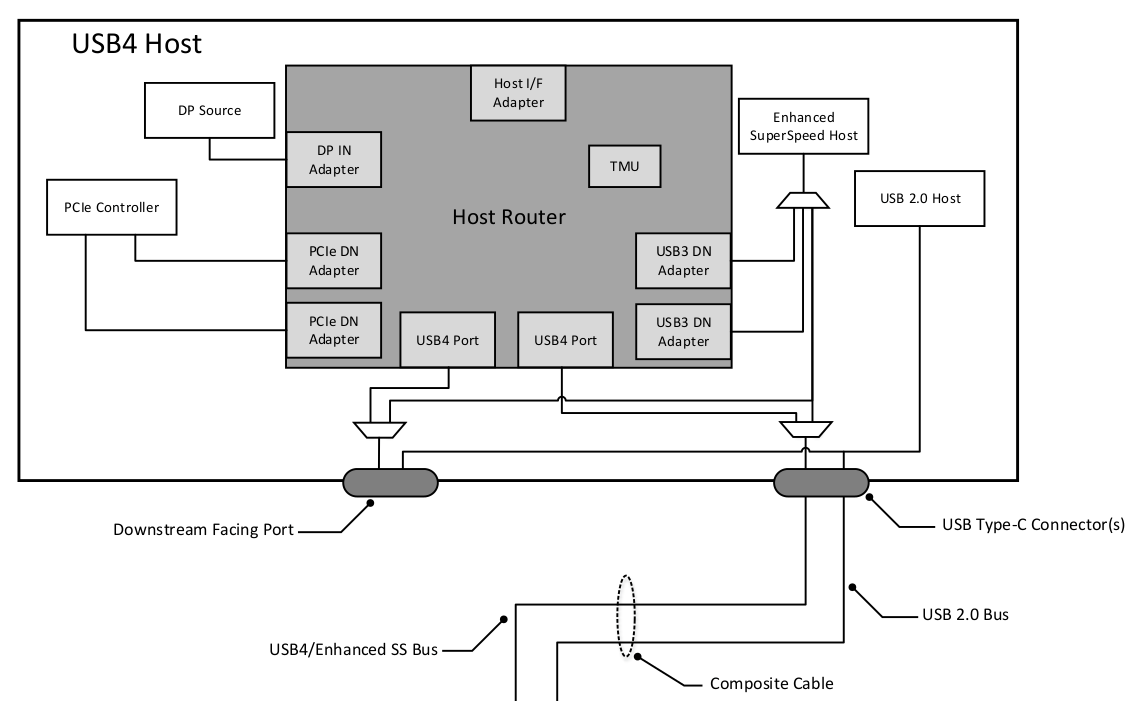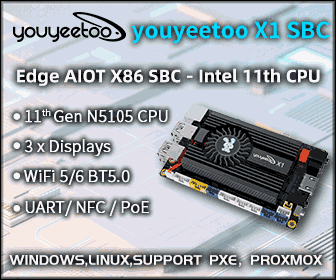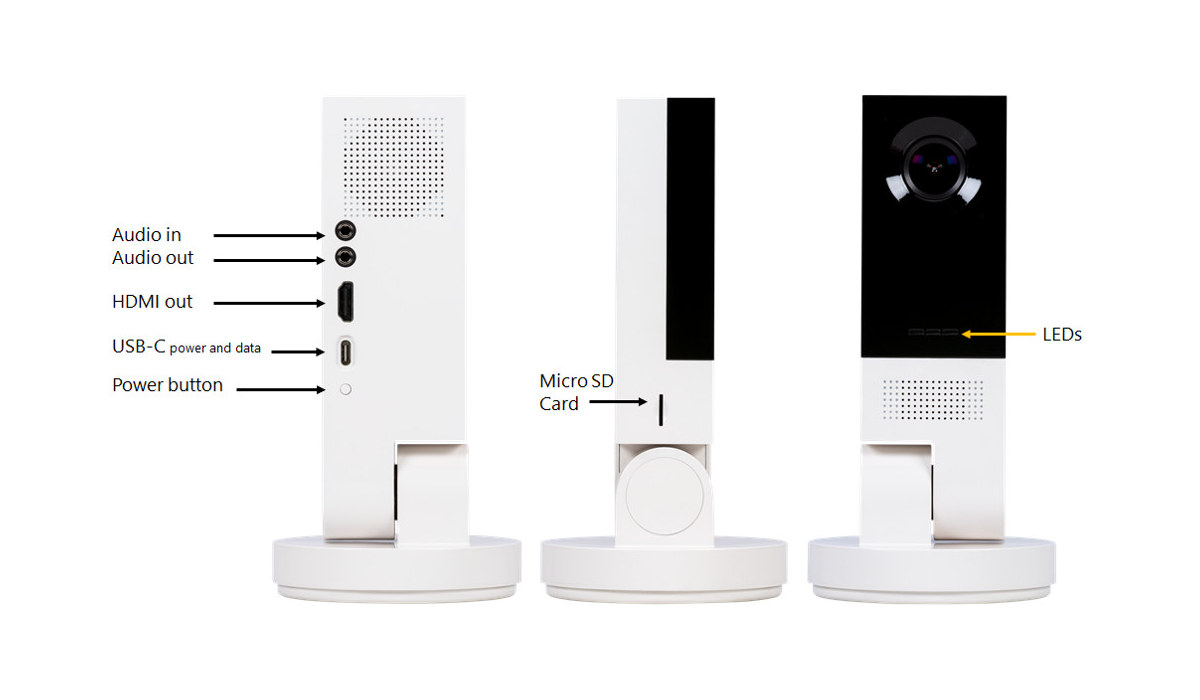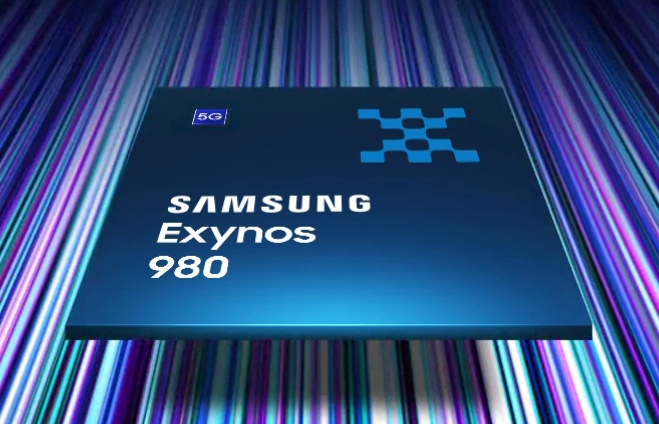NXP i.MX RT crossover processors combine real-time capabilities of microcontrollers with the performance of application processors thanks to an Arm Cortex-M7 core clocked at 528 MHz and more. The performance is indeed impressive as shown by Teensy 4.0 benchmarks, but so far NXP i.MX RT processor targeted general purpose applications. The company has now introduced three new crossover processors designed for AI applications. NXP i.MX RT106F is designed for offline face recognition and expression Identification, while RT106L and RT106A are made for local and cloud-based embedded voice applications. NXP i.MX RT106F Processor Highlights of the processor: CPU – Arm Cortex-M7 @ 600 MHz (3020 CoreMark/1284 DMIPS) Memory – 1 MB On-Chip SRAM plus up to 512 KB configurable as Tightly Coupled Memory (TCM) External memory interface options – NAND, eMMC, QuadSPI NOR Flash, and Parallel NOR Flash Real-time, low-latency response as low as 20 ns Industry’s lowest dynamic power with […]
MediaTek MT8516 2-Mic Development Kit is Designed for Alexa Voice Service (AVS)
MediaTek has just announced the MT8516 2-mic development kit for Alexa Voice Service (AVS) that aims to help developers build voice-assistant products faster, at reduced costs, and with advanced features such as multi-room music (MRM). The kit is based on MT8516 quad-core ARM Cortex-A35 application processor, which integrates audio front-end and post-processing technologies, as well as Wi-Fi and Bluetooth connectivity. MediaTek MT8516 2-mic development kit specifications: SoC – MediaTek MT8516 quad core Cortex-A35 processor @ 1.3 GHz System Memory I/F – LPDDR2, DDR3, LPDDR3, DDR3L Video Output – HDMI 1.4 with ARC Audio 2x DMIC Amazon Alexa support MediaTek PowerAQ Multi-Room Audio 2x 4-channel I2S S/PDIF TDM in/out up to 8 channels 2-channel PDM inputs 2-channel audio DAC and DAC Connectivity – Fast Ethernet, WiFi 4, Bluetooth 4.2 LE USB – 1x micro USB 2.0 OTG port MediaTek MT8516 supports the following technology components, although note that a license […]
Mastak Modular Air Quality Monitor Kit Supports CO2, Dust, Formaldehyde, Ozone and other Sensor Modules
The Mastak Indoor Air Quality Monitor Kit Medium Systems Limited, a UK company has released the Mastak, SoMs designed in a mechanical range that allows for indoor air quality monitoring, with a data IoT cloud service, and communications that include NB-IoT, 5G, WiFi, BLE, and LTE-M. The system is a new addition to the air monitoring market place. There have been reports on other air quality monitors in past articles that covered quick start and user experience with Sonoff SC WiFi, vThings WiFi CO2 Monitor, and the ANAVI Gas Detector. The Specs The ecological modules are all compatible and contain processor, peripherals and the sensors for data monitoring and collection, as well as the necessary power electronics. The modules were designed too and allow the user to arrange the systems into custom arrangements and place in unique form factors. There are a number of options also, for even further expandability […]
FriendlyELEC ZeroPi is a Tiny Allwinner H3 SBC with Gigabit Ethernet & USB, an Optional SPI Flash
Several years ago, FriendlyELEC launched NanoPi NEO board with Allwinner H3 quad-core Cortex-A7 processor followed by NanoPi NEO2 upgrading to the Allwinner H5 64-bit Arm Cortex-A53 processor. Both boards target low-cost headless applications with I/O headers, USB and Ethernet, but while the NEO2 comes with Gigabit Ethernet, NEO SBC only features 10/100M Ethernet. The company has now been working on a new family of boards called ZeroPi that’s very similar to NanoPi NEO boards, but they do not come with any I/O headers, and the first ZeroPi board features Allwinner H3 processor, and Gigabit Ethernet. ZeroPi specifications with highlights in bold or stricken-through showing differences against NanoPi NEO: SoC – Allwinner H3 quad-core Cortex A7 @ 1.2 GHz with an Arm Mali-400MP2 GPU System Memory – 256 or 512 MB DDR3 Storage – MicroSD card slot, unmounted SPI flash Connectivity – Gigabit Ethernet via Realtek RTL8211E PHY USB – 1x […]
How to Easily Calibrate Retraction in 3D Printers
[Update July 2020: It is now recommended to use Calibration Generator program instead of the Google Doc Spreadsheet in this article] Hey, Karl here with a short article on retraction tuning. I really enjoy reviewing 3D printers and all things 3D printing with one exception…. when I have to calibrate retraction (aka retraction tuning). It takes so much time. What is Retraction? While 3D printing on a standard FDM printer, the filament is pushed with an extruder motor that has a gear attached. It pushes the filament, either directly into the hotend assembly or through a Bowden tube to the hotend. Molten plastic is then layered to produce a model. When it is printing nearly all prints require non-extruding movements. During the extruding moves pressure builds up and in order to stop stringing and blobbing during non-printing moves, a retraction happens. There are 2 main variables that affect this: the […]
USB4 Specification Released, Up to 40 Gbps Data Transfer Rate Supported
USB 3.2 was announced about two years ago with speeds of up to 20 Gbps using existing USB 3.1 Gen 2 USB-C cables, but the USB Implementers Forum has done a bit work more and just released the USB4 specification allowing twice the speed at 40 Gbps. The USB4 architecture leverages the Thunderbolt protocol specification that was recently contributed by Intel Corporation to the USB Promoter Group, enables the faster data rate, as well as multiple simultaneous data and display protocols. Highlights of USB4 standard Two-lane operation using existing USB Type-C cables and up to 40Gbps operation over 40Gbps certified cables Multiple data and display protocols that share the maximum aggregate bandwidth Backward compatibility with USB 3.2, USB 2.0 and Thunderbolt 3 Up to 100 Watts power delivery Both USB 3.2 and USB4 require USB-C cables to make use of the maximum transfer rate, so traditional USB cables may fade […]
Microsoft Unveils The Vision AI Developer Kit For AI on the Edge
The field of Artificial Intelligence is getting more exciting every single day, and the big corporations and startups are massively pouring for it. One thing I am undoubtedly sure about is that the future will certainly be remarkable. Microsoft, the biggest software company in the world with sales over $100 billion has been venturing in the domain of artificial intelligence for a while now with cloud computing platform Azure and other related cloud computing services, but instead of its usual cloud computing route for AI, Microsoft is banking on AI on the edge with the introduction of the Vision AI Developer Kit in joint partnership with the semiconductor giant Qualcomm. With millions of data collected at the Edge, the potential of artificial intelligence on the edge is promising. AI cases performed on the Edge will help in making critical decisions, and more data insight can even facilitate important business scenarios. […]
Huawei Kirin 990 & Samsung Exynos 980 are the First Mobile SoCs with Integrated 5G Modem
[Update: post edited on September 6, 2019 with more details about Kirin 990 5G following the official launch of the processor] We’ve already seen mobile phones and laptops with the latest 5G cellular connectivity such as Samsung Galaxy S10 5G or Lenovo Project Limitless 5G laptop, which internally are designed with an Arm SoC plus a separate 5G modem chip. But as IFA 2019 is about to start, both Huawei and Samsung claim to have introduced the world’s first SoC with an integrated 5G modem with respectively Huawei Kirin 990 and Samsung Exynos 980. We should note that MediaTek is working on their own 5G SoC as well. Samsung Exynos 980 Samsung has already made the announcement so we have Exynos 980 key features and specifications: CPU – Octa-core processor with two Arm Cortex-A77 cores @ 2.2GHz, six Arm Cortex-A55 cores @ 1.8GHz GPU – Mali-G76 MP5 GPU Integrated NPU […]


